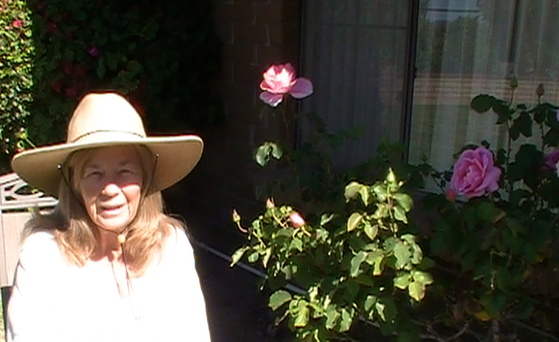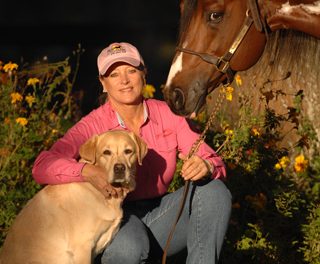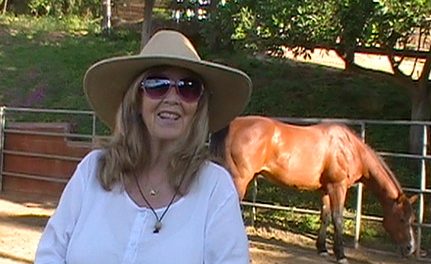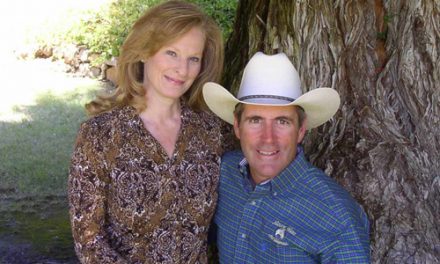 A few benefits you will gain from practicing this lesson is how to communicate with your body language, how to get your horse to wait, your horse learns to come when called, and that your horse can move away when you ask him to. Sounds Good! If you have any questions please post them.
A few benefits you will gain from practicing this lesson is how to communicate with your body language, how to get your horse to wait, your horse learns to come when called, and that your horse can move away when you ask him to. Sounds Good! If you have any questions please post them.
Today we have a video demonstration of the Waiting Game Liberty Lesson featuring Alessandra Deerinck and Rosalie. Thank you Alessandra and Rosalie for getting up early this morning to demonstrate this new lesson! Please click on the link below to see the video.
The Waiting Game:
The First Secret for this lesson…
..It helps to work with your horse when he feels relaxed and does not want to go anywhere. A nice hot day can help you with this part especially at the time he usually takes a nap. I suggest that people use the conditions around them to support the training of their horses.
Caution Zone… You should never try to train your horse to tie by tying. First, train your horse to stand quietly on one spot before you would try tying him. You want your horse to understand that he needs to stay in one place in a relaxed state before you would ever consider tying him. Do not ever tie a horse up that has not been properly trained to tie, if you are not a professional. This could cause serious injury because most horses will choose to panic when tied up. Always have a quick release knot that if your horse should start to object to being tied, you can free him instantly back under your control with the lead rope in your hands.
Training at liberty is the easiest way for a non-professional to learn how to prepare a horse so you can tie him safely. At liberty, your horse will not panic while learning how to stand quietly. After your horse has learned to stand quietly, the next part is to teach him how to stand tied. I will share the next stage of training to tie with a rope in another blog.
I teach halt in my first Ritual, Sharing Territory, with the Intimacy Bucket Game. If you are interested in this exercise it is part of my online Insider Circle and Extended Circle courses- which I suggest you sign up for, because more fun is to be had there! During the Intimacy Bucket Game, I teach a horse that when he approaches me, I can ask him to stop approaching and to wait for me to invite him to come up. This is his first lesson in halt.
…However, you do not need to train your horse using this exercise as long as your horse will halt when asked to.
This is how to begin training your horse to stand still on request:
Begin by putting a bucket of carrots or equine senior, or the treat you like to work with on the other side of the fence where you will be working your horse.
Then wait until your horse is not close to the bucket, about twenty feet away, and take him a carrot. While he is eating the carrot, leave your horse and go back to the bucket.
When your horse comes to you, give him another carrot and walk away. (Make sure the carrots are far enough away so he cannot reach them when you leave the bucket unattended. )
Wait a moment and see if he walks away from the bucket.
If he does, then walk back to the bucket and take him another carrot.
If he doesn’t, then go move him away from the carrot bucket until he will stay away from it.
When he decides to stay away, go get a treat and take it to him.
This will cause him to get the idea that to get a carrot he needs to listen to you at liberty. He will start to be more focused in figuring out what it takes to get a carrot.
Continue this step until he learns that he gets a carrot by staying away from the bucket.
Note: If you have a persistent horse that will not listen to you because he wants to stay by the carrots, be persistent by driving him away using intense body language and keeping your horse active in movement until he leaves the area along with vocalized sounds of clicks and strong low growling tones. He can run around if he wants. This will cause him to understand that running is not the answer and he will go back to listening to your direction and wanting to work with you rather than trying to beat the system.
Next step:
When he is not close to the bucket you go to the bucket, and call him using universal body language and calling his name, like asking a child to hurry up and get into the house, but much more inviting and softer and slower in your request.
When he comes up to you, say “whoa” abruptly. Jerk your body to attention in a stiff frame and step towards your horse, like a traffic cop that uses an arm stretched out at the car he wants to stop.
If your horse stops, then give him a carrot. Very quickly, your horse will learn to halt in order to get the carrot.
If your horse does not stop, get out of his way and begin the whole exercise over from the top.
The next step is when your horse has learned to halt from your request when approaching you and the bucket, you ask for the halt to be held longer and longer.
With practice, you can get a horse to stand still for as long as you wish if you teach him in small increased increments of time.
Continue this step until he learns to stand as long as you ask him to.
Next step:
Once your horse has learned to stop from your request, instead of taking him a carrot, get him to come up to you with the carrot in your hand by calling him using your body language.
When he comes to you, give him the treat.
If he doesn’t, just wait until he does.
Do these exercises repeatedly as it’s great fun to discover how quickly your horse learns how to work with you and you with him. Watch how this activity grows the bond!
This is great fun try it!
I will follow up with the next step soon on how to teach your horse to stand being tied.
Stay tuned.
May the Horse be with you!
Carolyn
http://www.carolynresnickblog.com





